
The back waters of the Lake District reveal its glory
[caption id="UncommonWaters_Feature" align="aligncenter" width="1024"]
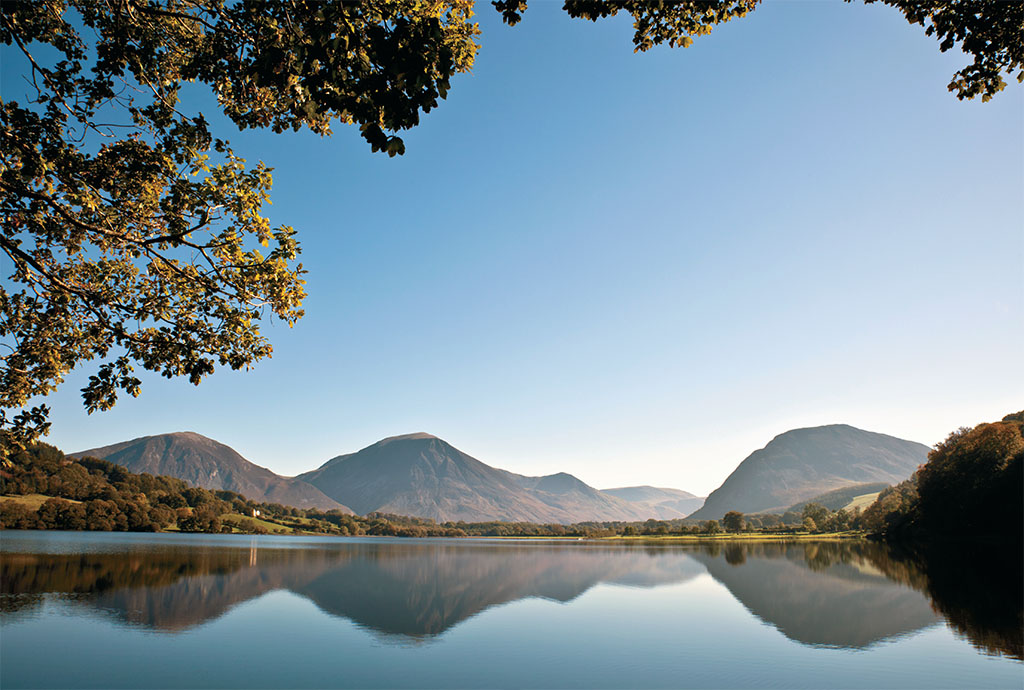
SIMON WHALEY
The Lake District, England’s largest national park, has only one lake—Bassenthwaite Lake. All the other bodies of water are meres, waters or tarns. More than 16 million visitors explore the 885 square-mile national park annually, most heading for Windermere, Derwent Water and Ullswater. All three offer boat trips and are a fantastic way to see the park’s mountains and fells. One of the boat companies, Windermere Lake Cruises, carries more than a million tourists every year itself, and is the 16th most popular tourist attraction in the entire UK.
Most visitors, however, miss out on the spectacular scenery surrounding the lesser-known lakes, even though they are easily accessible by car, on foot and even public transport. These “back waters” may not have pleasure craft offering round-the-lake cruises, but they offer an opportunity to experience the real Lake District, while discovering some of its interesting history.
Loweswater
Lying approximately 13 miles west of Keswick, Loweswater’s name comes the old Norse, laufsaer, which means leaves, so it’s also known as the Leafy Lake. A relatively level shore-side footpath from the car park at Maggie’s Bridge takes visitors through Holme Wood, a traditional English wood of alder, oak, lime, chestnut, ash and sycamore, which is the perfect home to the native red squirrel.
The western tip of Loweswater lies less than 500 yards from the national park boundary, yet on a clear, still day, the views and reflections across this mirror-like 150-acre lake are some of the best to be found in the country. Unlike all the other Cumbrian lakes, which drain away from the center of the park, Loweswater is the only major lake that drains into the park.
For six months of the year, Loweswater is home to Hunter Davies (biographer for Manchester United footballer, Wayne Rooney, The Beatles and Lake District walking legend, Alfred Wainwright) and his novelist wife, Margaret Forster.
Esthwaite Water
Esthwaite Water is sandwiched between England’s longest lake, Windermere, and Coniston Water, venue for many water speed records. Visitors often see Esthwaite Water when traveling from Beatrix Potter’s house, Hill Top, at Near Sawrey, to nearby Hawkshead. Using quiet roads and lanes, it’s possible to walk around this 280-acre lake, but those in the know take to their fishing boats. Esthwaite Water is the most nutrient-rich body of water within the park, making it ideal fishing for trout and pike, and the occasional passing osprey!
A young William Wordsworth, who went to nearby Hawkshead Grammar School in 1778, aged 8, enjoyed paddling in its waters. Such was his affection for Esthwaite Water that he mentions it twice in The Prelude.
Crummock Water
Crummock Water is the 10th largest body of water within the park and its name derives from the Norse word for Crooked One. Lying 14 miles by road from Keswick, it is 2½ miles long, three quarters of a mile wide, and up to 140 feet deep. Two main sources feed the lake. One is the short, but idyllic, Buttermere Dubs stream. The other is impressive Scale Force waterfall, one of the highest in the Lake District, with a total height of 170 feet and a single drop of 120 feet. It is widely believed that Crummock Water was joined to neighboring Buttermere millennia ago, for the two are separated by only a narrow, half-mile strip of farmland.
Buttermere
Buttermere is a far better choice than Crummock Water for those seeking a gentle afternoon’s lakeside amble. The 11th biggest lake within the park has a comfortable, relatively level, four-mile circumference. The small hamlet of Buttermere is popular with walkers keen to climb the 1,960-feet-high Haystacks, the favorite mountain of walking legend, Alfred Wainwright, whose ashes are scattered on Innominate Tarn near its summit.
[caption id="UncommonWaters_img1" align="aligncenter" width="1024"]
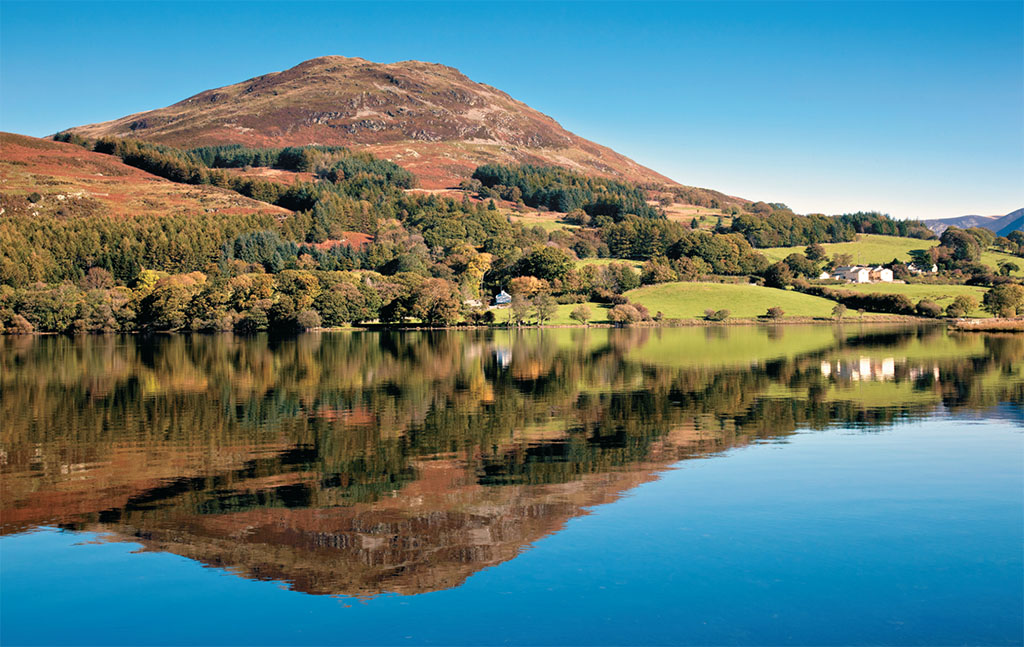
SIMON WHALEY
[caption id="UncommonWaters_img2" align="aligncenter" width="1024"]
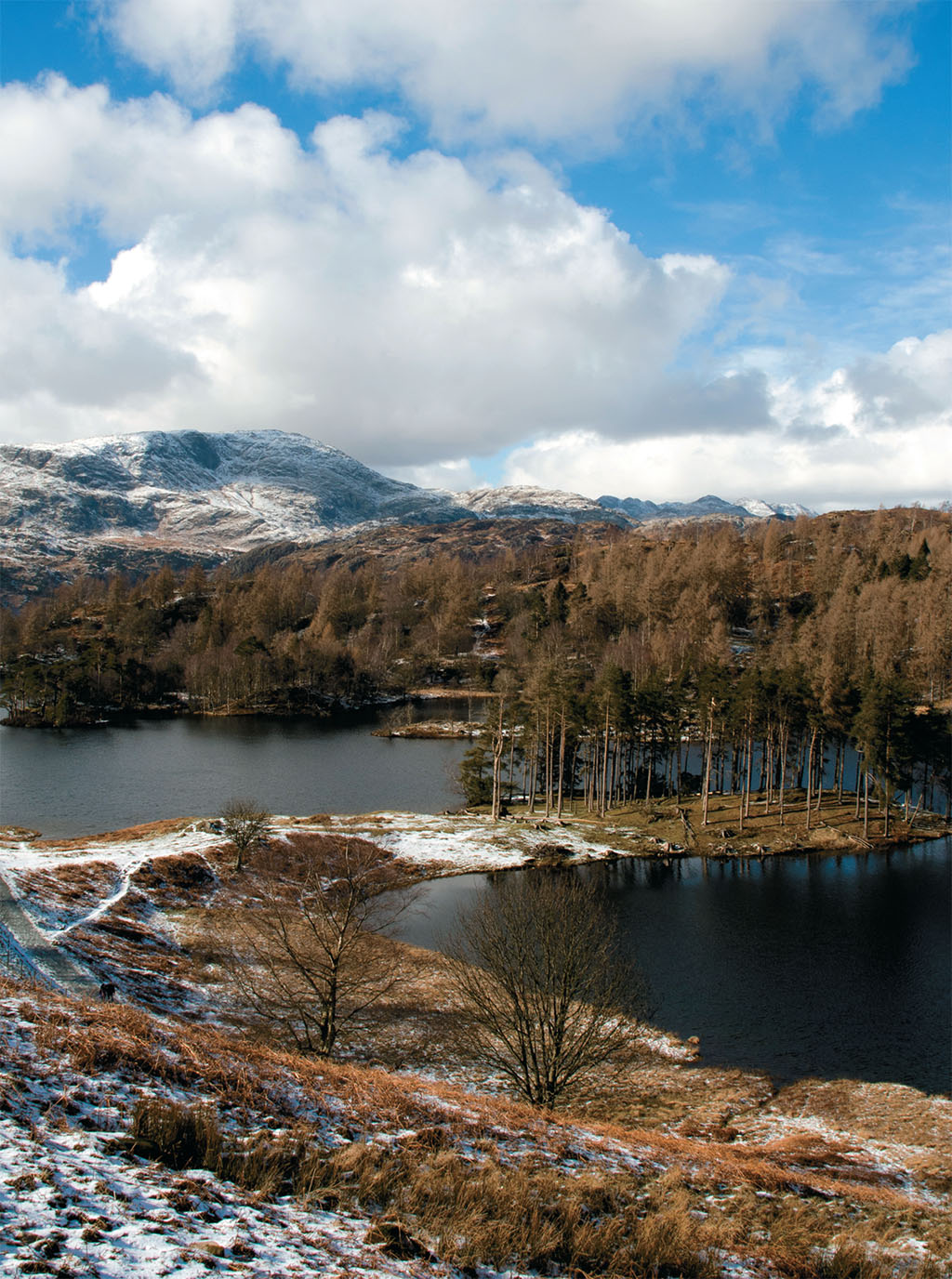
SIMON WHALEY
[caption id="UncommonWaters_img3" align="aligncenter" width="1024"]
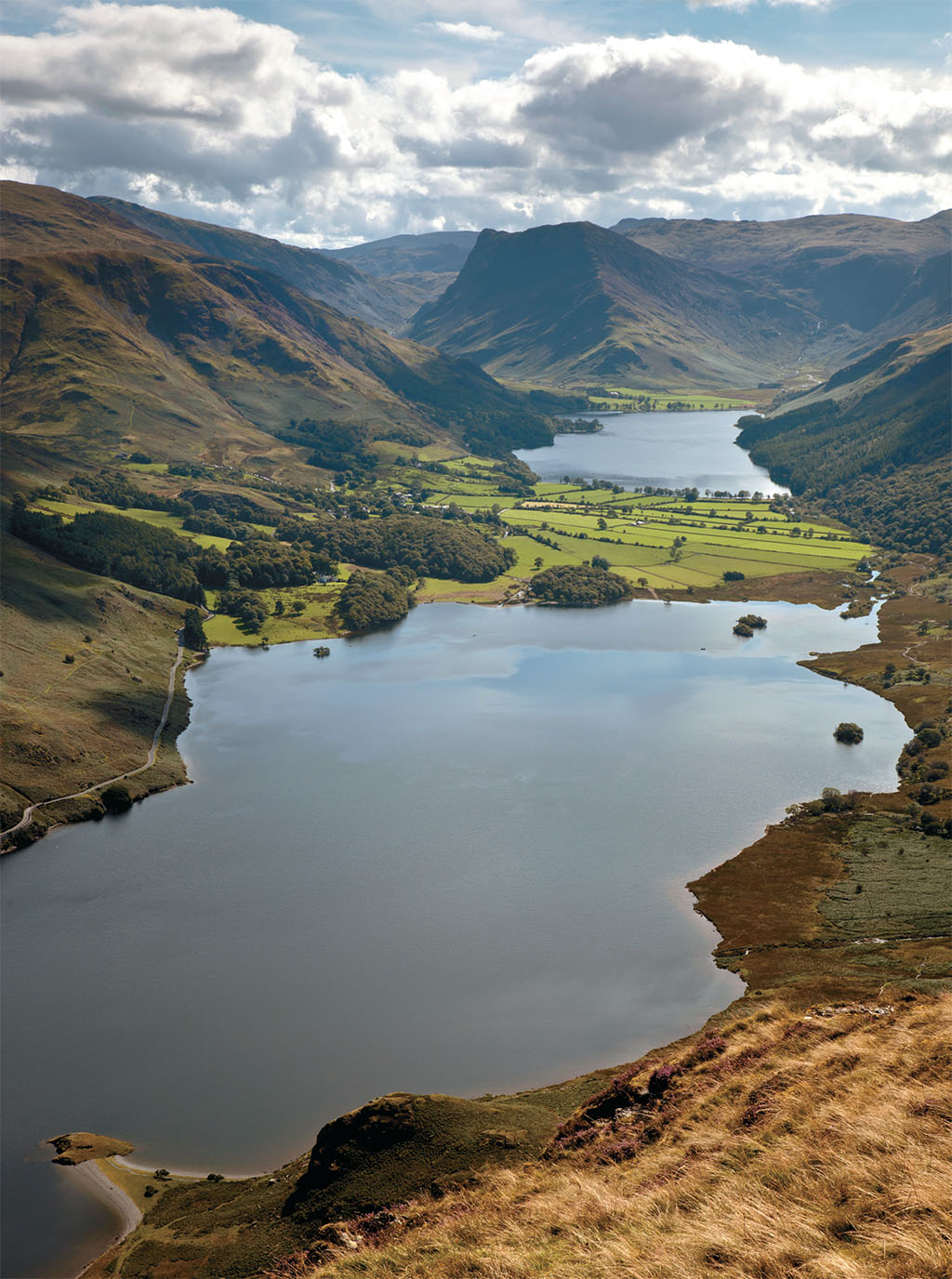
SIMON WHALEY
In the early 19th century, Buttermere was the source of a national scandal, when Mary Robinson, known locally as the Maid of Buttermere (because she was the most beautiful woman in the area), unwittingly married a bigamist imposter, John Hatfield. This was discovered only when the local poet, Samuel Taylor Coleridge, wrote about the wedding in a London newspaper. Hatfield fled to Wales, but was eventually caught, then tried and hanged in Carlisle.
Both Buttermere and Crummock Water are best approached from the east. That involves negotiating several one-in-four gradient ascents and descents through the 1,100 feet high Honister Pass, which explains why many coach tours fail to reach these magical lakes!
Moss Eccles Tarn
Thousands of visitors go to author Beatrix Potter’s home, Hill Top, at New Sawrey, yet most ignore the gentle two-thirds of a mile climb along the lane opposite to Moss Eccles Tarn. This intimate, five-acre body of water is full of water-lilies and bordered by rhododendrons and was once owned by Beatrix Potter herself. She regularly rowed a boat on its waters to help her creative muse—which inspired her book, The Tale of Mr. Jeremy Fisher, about a gentleman frog.
Tarn Hows
Surprisingly, Tarn Hows is man-made. High in the hills between Hawkshead and Coniston, a single-track, one-way lane leads to this beauty spot, with its level two-mile path, a section of which is wheelchair-friendly, surrounding the tarn. Created by the MP for Leeds, James Marshall, in 1862, Tarn Hows was originally two smaller ponds, which were enlarged and then planted with thick pine spruce and larch woodland. Today, it provides a great habitat for the red squirrel and is a site of Special Scientific Interest because of its natural diversity. It is home to the one of the UK’s rarest invertebrates, medicinal leeches, as well as the delicate water lobelia, which flowers in sheltered bays in summer.
[caption id="UncommonWaters_img4" align="aligncenter" width="1013"]
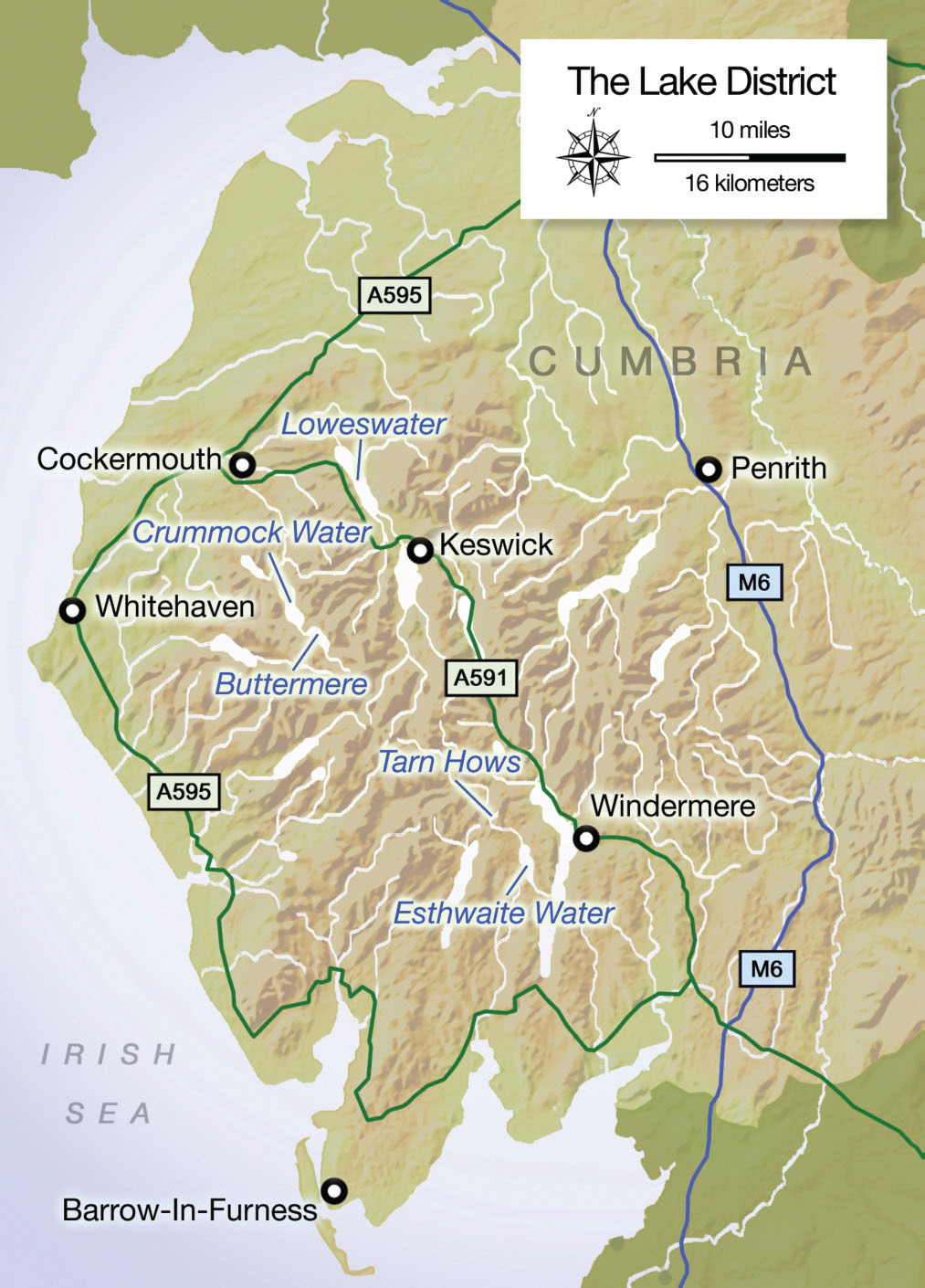
SIMON WHALEY
[caption id="UncommonWaters_img5" align="aligncenter" width="1024"]
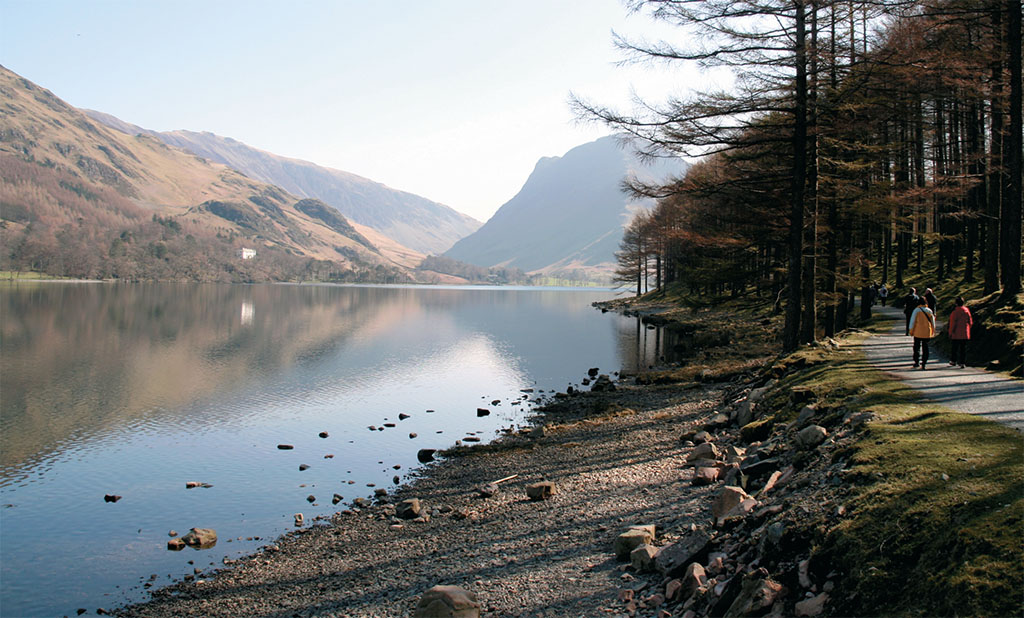
SIMON WHALEY
In winter, a dusting of snow adds that special magic to views across to the Langdale Pikes and the fells of Wetherlam and Coniston. James Marshall sold the land in 1929 to Beatrix Potter. She sold half the land to the National Trust in 1930, and left the remainder to the Trust in her will.
Brothers Water
At the foot of the Kirkstone Pass, linking Windermere with Ullswater, Brothers Water is confused. It is either the Lake District’s smallest lake, or its largest tarn. Named from the old Norse word, brothir, which means broad, it was known as Broad Water until renamed in the 19th century, when two brothers tragically died in its waters after falling through thin ice.
Taking the level path along its western shore enables visitors to walk alongside some of the oldest oak woodlands found anywhere in the Lake District. It’s also the route Dorothy Wordsworth took on Good Friday in 1802, the day after she’d spotted those famous daffodils on the banks of Ullswater. William sat nearby, writing poetry, whilst Dorothy went exploring. In her diary she wrote, “I was delighted with what I saw. The water under the boughs of the bare old trees, the simplicity of the mountains, and the exquisite beauty of the path.” Today, both Dorothy and William would recognize the path along Brothers Water.
So, while Windermere, Ullswater and Derwent Water draw the crowds, these seven seductive shorelines offer a tantalizing glimpse of the Lake District without the tourist trappings. For these uncommon waters, small is most definitely beautiful.
Getting to Know You
Wastwater is England’s deepest lake, with a depth of 258 feet.
The boat, Lady of the Lake, operated by the Ullswater Steamer Company, was launched in 1877. It is the oldest working passenger vessel in the world.
Coniston Water was popular for world record speed attempts because it is the longest straight stretch of deep water, devoid of islands, in any English lake.
Ennerdale Water is the only large lake in the Lake District without a road running alongside it.
Haweswater was created in 1929 when the world’s first hollow-buttress dam was built.
Derwent Water has a floating island that often appears at the end of summer. It’s a mass of soil and decayed plants that rises to the surface on a bed of natural gases and sinks again when the gases have dissipated.
In November 2009, heavy rain caused horrendous flooding in Cumbria. The surface level of Windermere (10½ miles long) rose over 5 feet, when an extra 9,900,000,000 gallons of rain water drained into the lake—5,800,000,000 of which poured in within 36 hours.
Seathwaite, a couple of miles from Buttermere, is England’s wettest inhabited place, with an annual average rainfall of 140 inches.
[caption id="UncommonWaters_img6" align="aligncenter" width="1024"]
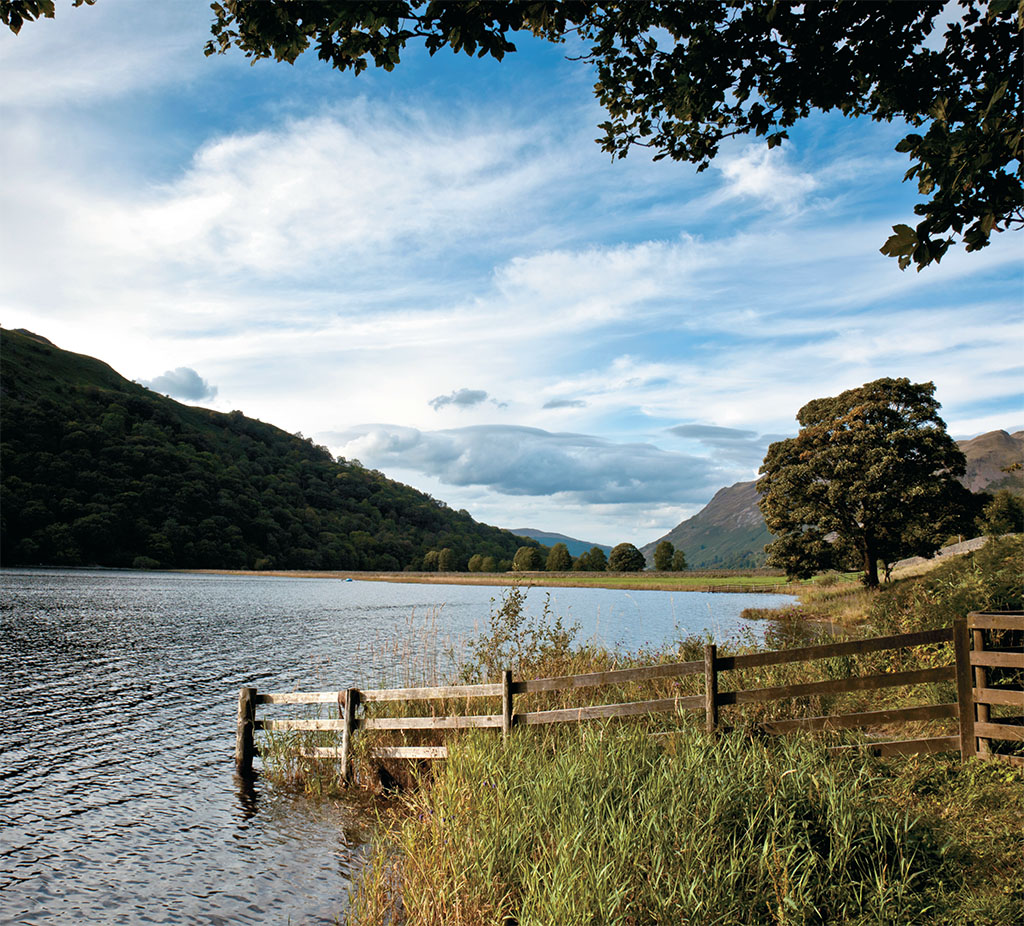
SIMON WHALEY





Comments